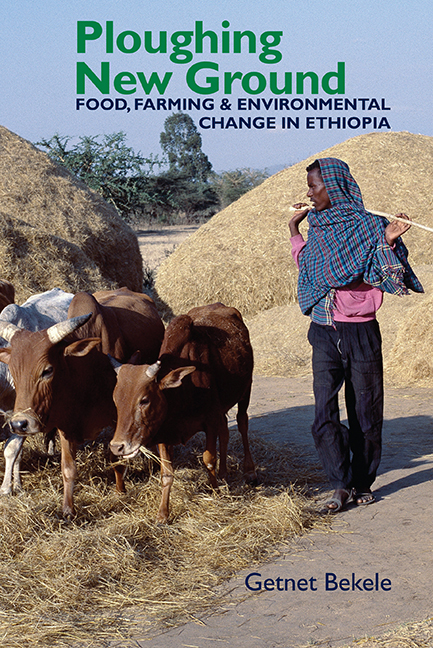Book contents
- Frontmatter
- Dedication
- Contents
- List of Maps and Tables
- Acknowledgements
- Note on Orthography
- Acronyms & Abbreviations
- Glossary
- Map
- Introduction
- 1 Landscape Pastoral: The making and remaking of a grassland environment, 1886–1916
- 2 Negotiating a Landscape: Continuity and change in a grassland environment, 1917–1941
- 3 Blurring the Boundaries: The ascendancy of crop production in a flexible environment, 1942–1955
- 4 Fresh Encounters and Morphing Strategies: The changing organization of production in an era of agricultural intervention, 1956–1965
- 5 Inputs, Outputs and the Farm: Transformations in the science, politics and praxis of agricultural development, 1966–1974
- 6 Competition and Co–existence: Creating space for small- to large-scale farming, 1966-1974
- 7 Of Production and Production Relations: Farming in an era of revolutionary change and socialist development, 1975–1991
- 8 Vicious Circle: Agricultural development at the time of ‘revolutionary democracy’, 1991–2016
- Conclusion
- Bibliography
- Index
- Eastern African Studies
2 - Negotiating a Landscape: Continuity and change in a grassland environment, 1917–1941
Published online by Cambridge University Press: 31 August 2018
- Frontmatter
- Dedication
- Contents
- List of Maps and Tables
- Acknowledgements
- Note on Orthography
- Acronyms & Abbreviations
- Glossary
- Map
- Introduction
- 1 Landscape Pastoral: The making and remaking of a grassland environment, 1886–1916
- 2 Negotiating a Landscape: Continuity and change in a grassland environment, 1917–1941
- 3 Blurring the Boundaries: The ascendancy of crop production in a flexible environment, 1942–1955
- 4 Fresh Encounters and Morphing Strategies: The changing organization of production in an era of agricultural intervention, 1956–1965
- 5 Inputs, Outputs and the Farm: Transformations in the science, politics and praxis of agricultural development, 1966–1974
- 6 Competition and Co–existence: Creating space for small- to large-scale farming, 1966-1974
- 7 Of Production and Production Relations: Farming in an era of revolutionary change and socialist development, 1975–1991
- 8 Vicious Circle: Agricultural development at the time of ‘revolutionary democracy’, 1991–2016
- Conclusion
- Bibliography
- Index
- Eastern African Studies
Summary
In the lake region of Ethiopia, the 25 years from 1917 – like the quarter century that preceded it – were marked by both the retrenchment and growing maturity of a pastoral way of life and of livestock production along previously existing and new lines. While that continuity was important, this period permitted also the slow expansion of crop production in certain parts of the region. The major promoters of this had been two groups of farmers that traced their origin from different places. To the first group belonged the farmers relocating from some of the nearby highlands, of which Arsi, Gurage, Silti and Shewa were probably the most important for this period. The populations belonging to the second group were different from that because of their small number and their places of origin, which were Addis Ababa and Italy. Setting these two groups of populations apart were not only their number and their different places of origin. More important were, rather, the different methods that they used to gain rights of access to farming land in their new sites of settlement and occupation. If the populations belonging to the first group relied on socially constructed rules and practices, what worked the most for the farmers of urban origin, namely those originating in Addis Ababa and Italy, were the state-sanctioned rules and regulations governing access to farming land. Also different was their objective in farming, which drew its inspiration from Addis Ababa's fledgling food market. Like the provisioning method that preceded and accompanied it, Addis Ababa's food market was a product of political factors. Interestingly, the lake region was one of the many places where struggles over the capital's evolving politics of food were fought and lost, and then won after 1917. This chapter focuses on these points. Its primary object is to understand the factors that contributed to continuity and change in that region's agriculture and environment in the two-dozen years ending in May 1941.
- Type
- Chapter
- Information
- Ploughing New GroundFood, Farming & Environmental Change in Ethiopia, pp. 41 - 59Publisher: Boydell & BrewerPrint publication year: 2017



